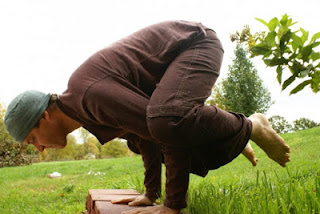People who are usually inactive can improve and
make their health and well-being by becoming even reasonably active and lively
on a regular basis. What is important to note is that physical activity require
not be strenuous to achieve health benefits and greater health benefits can be
achieved by increasing the intensity, duration or frequency of physical
activity which resultantly benefits health. Being physically active and lively
plays a crucial role in ensuring well-being and health, and there is a large
body of research examining the benefits of exercise. Physical activity
benefits many parts of the body such as the heart, bones, skeletal muscles,
blood, cholesterol levels, the nervous system and the immune system.
Physical activities help reduce many of the risks.
1. Reduces Hypokinetic Diseases
Hypokinetic disease is the condition that
occurs from an inactive lifestyle. Hypokinetic diseases are
caused owing to lack of physical activity. Hypokinetic diseases could include
difficulties arising from sedentary behavior and obesity.
Physical activity helps reduce Hypokinetic
Conditions and reduces the risk of forms of cancer particular blood. Physical
activity plays a central role in avoiding the numerous health conditions
associated with obesity and maintaining a healthy body weight. Physical
activity plays a significant role in the treatment and management of Type II
diabetes. Continuous and regular physical activity is essential to decreasing
risk of osteoporosis and maintaining bone density. Active people who own good
muscle fitness are less likely to have back and other musculoskeletal problems
than unfit and inactive people. Physical activity help reduce the risk and
severity of a variety of ordinary mental health disorders Common mental
(emotional) health disorders can be perceived as hypokinetic conditions. When
people practice and continuously exercise they will be safe from obesity and
other such issues.
2. Helps Prevent Cardiovascular Diseases
Cardiovascular diseases or conditions are
stroke, hypertension and peripheral vascular diseases. People get
Cardiovascular diseases for many reasons, each one called a risk factor. The
more risk factor one has, the more chance he has of getting a disease.
Sedentary, or inactive, living is one of the primary risk factor, so cardiovascular disease is
considered a hypokinetic condition.What is
important to know is that there are various types of cardiovascular diseases
and different forms of cardiovascular disease are the leading killers in
societies. There is an affluence of statistical evidence that physical
inactivity and idleness are a most important risk factor for CHD. Regular physical activity and movement
and accompanying fine physical fitness are associated with a reduced risk of
stroke and it helps control high blood pressure (hypertension). Regular physical activity and
fitness are helpful in the deterrence of peripheral vascular diseases.
3. Reduces the Risk of Heart Attack
Furthermore, Heart attack is the most serious
and prevalent of all hypokinetic diseases. Regular physical activity help
reduces the risk of heart attack. It is important to note that there is
evidence that regular exercise can improve coronary circulation and
consequently reduce the chances of a heart attack and dying from facing one.
The heart of the inactive and idle person is expected to be less able to resist
stress and is more vulnerable to an emotional storm that may likely precipitate
a heart attack. Regular physical activity is one useful and efficient means of
remedy for a person who has had a heart attack or who has coronary heart disease.
4. Reduces Metabolic Syndrome
Metabolic syndrome is cluster of conditions or a
group of metabolic risk factors such as a high blood sugar level, increased
blood pressure, abnormal cholesterol levels and excess body fat around the
waist, that occur together, increasing the risk of stroke, heart disease and
diabetes. Some of the main causes of this syndrome are: having insulin
resistance, being overweight or obese, genetic factors and being physically
inactive, which give rise to metabolic, risk factorsIn addition to the benefits
of physical activity on reducing risk factors for chronic disease improving
health and, it has been shown to be effectual in improving mental health, which
is also a main cause of disability. Many suffer from depression, and mental
illnesses affect and are affected by chronic conditions, for instance, heart,
cancer and other cardiovascular diseases, HIV/AIDS and diabetes.
The facts on the mental health benefits of physical activity and exercise is
less well documented than for the physical effects. However, the body of
evidence is rising fast, with many studies and clinical test having shown
definite benefits including: reducing symptoms of stress, improved mood, anger
and depression, slowing cognitive decline and alleviating anxiety.
5. Improves Immune
System
Evidence suggests that regular physical activity
can help and enhance the function of the immune system, helping the body resist
infections such as the common cold and the flu. Moderate activity has been
shown to help reduce symptoms of some forms of arthritis. Being active can also
help people avoid depression or reduce symptoms of depression. One-third of all
adults have report that they often feel depressed.
6. Reduces Problem with Aging
 Physical activities help reduce the problem
pertaining to aging. Regular physical activity can help improve the level of
fitness and improve and enhance functioning among older adults. Due to regular
physical activities, the chances for getting old becoming unhealthy become
less. Regular physical activity can squeeze illness and limited functioning
into a shorter period of life and enhance the condition of health. The level
fitness can be improved.Regular physical activity and good health-related
physical fitness are significant to health promotion and feeling well. Physical
activity improves and enhances metabolic fitness that can reduce risk of a
variety of health problems and good physical fitness can help an individual
enjoy his or her leisure time that helps reduce the chances of getting old.
Furthermore, good physical fitness and physical activities can help an
individual work effectively and efficiently and physical fitness is vital to
effective living. Good physical fitness may help one assist in meeting
unexpected emergencies and assist function safely; also, physical fitness is
the basis for creative and dynamic activity.
Physical activities help reduce the problem
pertaining to aging. Regular physical activity can help improve the level of
fitness and improve and enhance functioning among older adults. Due to regular
physical activities, the chances for getting old becoming unhealthy become
less. Regular physical activity can squeeze illness and limited functioning
into a shorter period of life and enhance the condition of health. The level
fitness can be improved.Regular physical activity and good health-related
physical fitness are significant to health promotion and feeling well. Physical
activity improves and enhances metabolic fitness that can reduce risk of a
variety of health problems and good physical fitness can help an individual
enjoy his or her leisure time that helps reduce the chances of getting old.
Furthermore, good physical fitness and physical activities can help an
individual work effectively and efficiently and physical fitness is vital to
effective living. Good physical fitness may help one assist in meeting
unexpected emergencies and assist function safely; also, physical fitness is
the basis for creative and dynamic activity.
7. Develops Optimal
Wellness
Physical fitness and wellness involves
aspects of life that are essential to keep oneself in top condition. Optimal
physical wellness is developed through the blend of healthy eating habits and,
most importantly, through beneficial physical activity and exercise. Essential
components of physical wellness comprise cardiovascular strength, building
muscular strength and endurance and endurance and flexibility. Moreover,
physical activity and wellness is also concerned with increasing personal responsibility
for one’s own health care, for instance, caring for minor illnesses and knowing
when professional medical consideration is required. Developing optimal
physical wellness allows one to be able to monitor one’s own essential signs
and understand body's warning signs. One would understand and appreciate the
relationship between sound nutrition and how the body performs. The physical
benefits of looking good and feeling great most often lead to the psychological
benefits of enhanced self-control, self-esteem, a sense of direction and
determination.
8. Assesses the Heart
Disease Risk Factors
 Self-assessment of risk factors can help modify
and enhance lifestyle to reduce and control risk of heart disease. Physical
activity reduces days with pain for those with osteoporosis, arthritis, and
chronic back problems and reduce and control activity limitations, especially
among older people. Also, physical activities increase diagnosis of and
decrease incidence of Type II diabetes as well as decrease incidence of
depression. Moreover, physical activity and good physical fitness help reduce
incidence of deaths from cancer and decrease incidence of heart diseases
including high blood pressure and stroke. It also decrease incidence of high
cholesterol levels among people. It should be noted that regular physical
activity and good health fitness increases quality and years of healthy life as
well as it increase incidence of people having healthy days and active days.
Moreover, it increases the maintenance and adoption of everyday physical
activity. Physical activity, reduce prevalence of overweight and increase
prevalence of a healthy weight.
Self-assessment of risk factors can help modify
and enhance lifestyle to reduce and control risk of heart disease. Physical
activity reduces days with pain for those with osteoporosis, arthritis, and
chronic back problems and reduce and control activity limitations, especially
among older people. Also, physical activities increase diagnosis of and
decrease incidence of Type II diabetes as well as decrease incidence of
depression. Moreover, physical activity and good physical fitness help reduce
incidence of deaths from cancer and decrease incidence of heart diseases
including high blood pressure and stroke. It also decrease incidence of high
cholesterol levels among people. It should be noted that regular physical
activity and good health fitness increases quality and years of healthy life as
well as it increase incidence of people having healthy days and active days.
Moreover, it increases the maintenance and adoption of everyday physical
activity. Physical activity, reduce prevalence of overweight and increase
prevalence of a healthy weight.
9. Boosts Memory
This is another beneficial effect of physical
activity. Many researches have been conducted across the globe, which prove
that physical activity has benefit for memory. Physical activity helps thinking
and memory through direct and indirect means. Through direct means it helps
reduce insulin resistance, reduce inflammation and stimulate the release
of growth factors. Through indirect means physical activity helps improve sleep
and mood as well as reduces anxiety and stress.
10. Brings Fun and
Joy
Physical activity does not necessary be all
about strict fitness exercise so as to lose weight or reduce blood pressure, it
can bring joy and fun to you and provide the opportunity to catch up with
friends.

0 comments:
Post a Comment